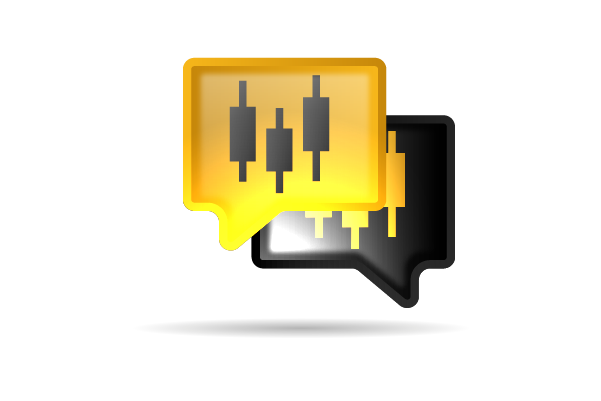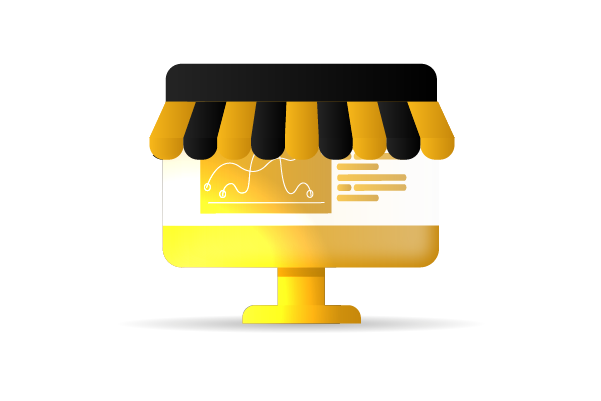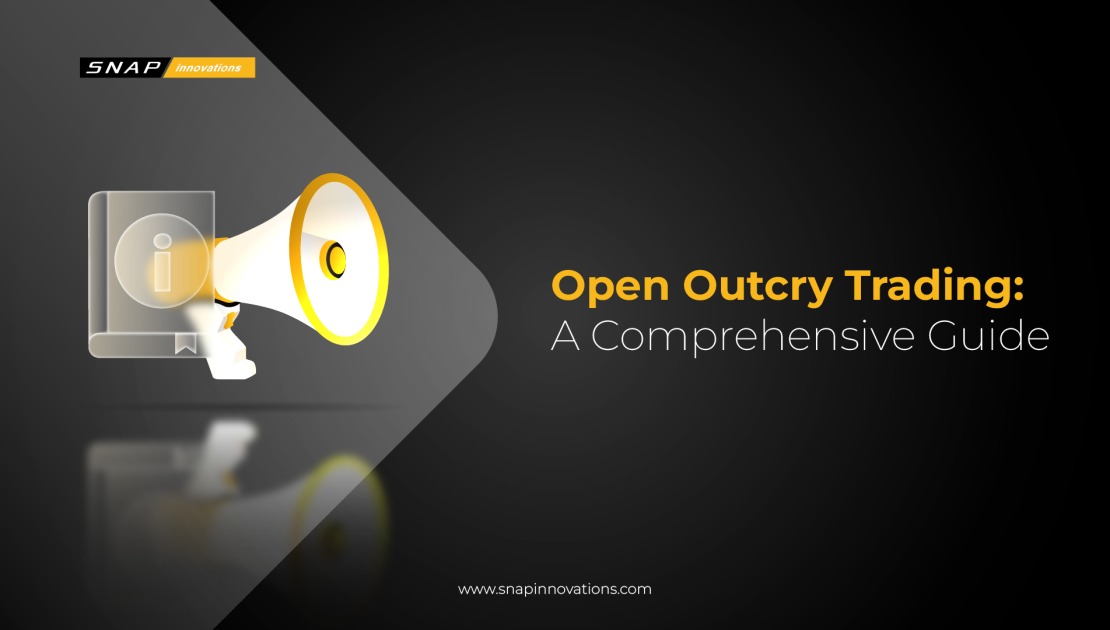In the bustling world of financial markets, the method of open outcry trading has stood out for decades as a fundamental process for executing trades. This traditional form of trading involves traders shouting and using hand signals to buy and sell securities on the trading floor of a stock exchange, such as the iconic New York Stock Exchange or the Chicago Mercantile Exchange. Unlike the silent clicks of today’s digital transactions, open outcry trading is characterized by its dynamic and often chaotic atmosphere, where human interaction plays a crucial role in the price discovery process.
The essence of open outcry trading lies in its direct, face-to-face transactions, enabling traders to leverage their instincts, experience, and non-verbal cues to make split-second decisions. This method not only facilitates a transparent trading environment but also adds a layer of immediacy and flexibility, allowing participants to react quickly to market changes and news.
Though the advent of electronic trading platforms has transformed the landscape of financial markets, open outcry trading still retains its charm and significance in certain commodities and futures markets. It serves as a testament to the enduring value of human judgment and interaction in the complex world of trading.
History of Open Outcry Trading
 The roots of open outcry trading stretch back to the 17th century, originating in commodity exchanges where merchants and traders gathered to negotiate prices openly. This method of trading evolved from informal outdoor gatherings to more structured indoor exchanges, becoming the backbone of financial trading systems around the world.
The roots of open outcry trading stretch back to the 17th century, originating in commodity exchanges where merchants and traders gathered to negotiate prices openly. This method of trading evolved from informal outdoor gatherings to more structured indoor exchanges, becoming the backbone of financial trading systems around the world.
The Chicago Board of Trade (CBOT), established in 1848, is one of the earliest and most significant examples of an institution adopting the open outcry system. Traders would stand in a trading pit, using elaborate hand signals and vocal bids to conduct transactions. This method allowed for efficient communication and execution of trades in a time when electronic devices were non-existent.
Throughout the 19th and 20th centuries, open outcry exchanges proliferated, becoming synonymous with the vibrancy and intensity of financial markets. Iconic trading floors like those of the New York Stock Exchange (NYSE) and the Chicago Mercantile Exchange (CME) became symbols of economic power and activity, with traders bustling about, negotiating deals that could move markets.
Read More: Retail Options: Strategies for Success in Today’s Market
However, the turn of the 21st century marked the beginning of a significant transition. The rise of digital technology and electronic trading platforms started to challenge the traditional open outcry system, offering faster, more efficient, and cost-effective ways to execute trades. This shift has led to the gradual decline of open outcry trading, with many exchanges either significantly reducing their reliance on it or phasing it out entirely in favor of electronic systems.
Despite this evolution, the history of open outcry trading remains a critical chapter in the story of financial markets. It highlights a period when human interaction, intuition, and physical presence were paramount, shaping the financial landscape and leaving a lasting legacy on how trading is perceived and conducted.
How Open Outcry Trading Works
 At the heart of open outcry trading lies a system driven by human communication and interaction, where traders use a combination of shouting and hand signals to express their trading intentions. This section breaks down the key components of how open outcry trading operates, ensuring clarity on its execution process.
At the heart of open outcry trading lies a system driven by human communication and interaction, where traders use a combination of shouting and hand signals to express their trading intentions. This section breaks down the key components of how open outcry trading operates, ensuring clarity on its execution process.
The Trading Pit: The focal point of open outcry trading is the trading pit, a designated area on the exchange floor where traders congregate to buy and sell securities. Each pit is typically dedicated to a specific type of security, such as stocks, commodities, or futures contracts. Traders, also known as floor traders, stand in these pits, ready to engage in transactions.
Hand Signals: In the noisy environment of the trading floor, hand signals become an essential tool for communication. Traders use a standardized set of gestures to indicate whether they wish to buy or sell, the quantity they are interested in, and at what price. These signals enable traders to convey their orders quickly and efficiently across the crowded space.
Verbal Bids and Offers: Alongside hand signals, verbal communication plays a crucial role in open outcry trading. Traders shout their bids (offers to buy) and asks (offers to sell) to announce their trading intentions to the market. The volume and urgency in a trader’s voice can also convey additional information about their level of interest and urgency.
Matching Orders: The objective in open outcry trading is to match buy and sell orders. When a trader finds a counterpart willing to accept their bid or ask price, they verbally confirm the transaction. A broker or exchange official present in the pit records the details of the trade, ensuring its execution and settlement.
The Role of Floor Brokers: Floor brokers act as intermediaries for clients outside the trading floor, executing buy or sell orders on their behalf. They navigate the pit, interpreting hand signals and shouts to find the best possible deals for their clients, leveraging their expertise and relationships to negotiate prices.
This dynamic and visually engaging system of trading relies heavily on the skill, speed, and acumen of traders. Despite the technological advancements and the shift towards electronic trading, the principles of open outcry trading—transparency, immediacy, and liquidity—continue to influence modern trading practices.
The Role of Open Outcry Trading in Modern Markets
 In an era dominated by electronic trading platforms, one might wonder about the continued relevance of open outcry trading in today’s financial markets. Despite the significant shift towards digital transactions, open outcry trading retains a specialized role, particularly in commodity and futures markets, where it complements electronic trading by offering unique advantages.
In an era dominated by electronic trading platforms, one might wonder about the continued relevance of open outcry trading in today’s financial markets. Despite the significant shift towards digital transactions, open outcry trading retains a specialized role, particularly in commodity and futures markets, where it complements electronic trading by offering unique advantages.
1. Niche Markets and Products
Open outcry trading continues to thrive in certain niche markets and for specific products where the complexity of trades and the need for human negotiation are paramount. In these scenarios, traders value the ability to negotiate large or complex deals in person, leveraging the nuanced communication that open outcry provides.
2. Price Discovery and Transparency
One of the enduring strengths of open outcry trading is its contribution to price discovery. The face-to-face negotiation process allows for a more transparent and dynamic establishment of prices based on real-time supply and demand. This transparency is particularly valued in volatile markets, where the immediate reactions and negotiations can provide a more accurate reflection of market sentiment.
3. Flexibility and Human Judgment
Open outcry trading offers a level of flexibility and the ability to use human judgment that electronic systems sometimes lack. Traders on the floor can interpret nuances and react to shifts in market sentiment or news more swiftly and creatively than automated systems, providing opportunities for strategic advantages.
4. Hybrid Trading Systems
Recognizing the benefits of both electronic and open outcry trading, some exchanges have adopted hybrid models. These models allow for the coexistence of both methods, with electronic trading handling the majority of transactions for efficiency and speed, while open outcry is reserved for more complex or strategic trades that benefit from human interaction.
5. The Future Role of Open Outcry
As financial markets continue to evolve, the role of open outcry trading is likely to further diminish but not disappear entirely. Its continued existence speaks to the unique value of human intuition and interaction in trading, serving specific market needs that electronic platforms cannot fully replicate.
Advantages and Challenges of Open Outcry Trading
While open outcry trading may seem antiquated in the digital era, it possesses unique advantages that have allowed it to endure alongside modern electronic trading systems. However, it also faces significant challenges that have led to its decline in many markets. Understanding both sides of this coin is crucial for a comprehensive view of open outcry trading.
Advantages
- Transparency and Fairness: The face-to-face nature of open outcry trading promotes transparency, as market participants can directly observe trading activity. This visibility helps in ensuring fairness and integrity in price discovery, as traders negotiate prices openly.
- Flexibility and Negotiation: Open outcry allows for greater flexibility in trading, especially for large or complex orders. Traders can use their skills and experience to negotiate better terms, something that’s harder to replicate with automated systems.
- Market Sentiment and Dynamics: The trading floor’s atmosphere can provide immediate insights into market sentiment and dynamics. Traders can gauge the mood and react swiftly to changes, leveraging the collective behavior observed on the floor.
Challenges
- Efficiency and Speed: Compared to electronic trading, open outcry is inherently slower and less efficient. The physical limitations of human traders cannot match the speed of electronic systems, which can execute orders in milliseconds.
- Cost and Scalability: Maintaining a trading floor involves significant overhead costs, from the physical space to the personnel required to operate effectively. Moreover, open outcry trading does not scale as easily as electronic trading, limiting its capacity to handle high volumes of transactions.
- Accessibility and Global Reach: Open outcry trading is geographically confined to the location of the trading floor, limiting participation to those physically present or represented by brokers. In contrast, electronic trading platforms offer global access, allowing anyone with an internet connection to participate in markets around the world.
- Adaptation to Technological Advances: As financial markets evolve, the need for faster, more efficient trading systems becomes more pronounced. The difficulty of integrating open outcry trading with advanced technologies and data analytics tools presents a significant challenge to its continued relevance.
Despite these challenges, open outcry trading has adapted and found its niche in the modern financial ecosystem. Its continuation suggests that the advantages it offers, particularly in specific markets and scenarios, still hold value for many traders and institutions.
Comparing Open Outcry to Electronic Trading Systems
The evolution of trading practices has seen a significant shift from the traditional open outcry method to modern electronic trading systems. This transition reflects technological advancements and changing market needs, each method bringing its unique set of advantages and limitations to the table.
Speed and Efficiency: Electronic trading systems offer unparalleled speed and efficiency in executing trades. Transactions can be completed in milliseconds, a pace that open outcry trading cannot match. This efficiency is crucial in today’s fast-paced markets, where prices can fluctuate rapidly within seconds.
Accessibility and Global Reach: Electronic platforms democratize access to financial markets, allowing traders from around the globe to participate without the need to be physically present on a trading floor. This global reach has expanded the pool of participants and increased the volume of trades, contributing to more liquid markets.
Read Next: What is EMS & OMS? Streamlining Trading Operations
Cost Effectiveness: Operating an electronic trading platform is generally less costly than maintaining a physical trading floor. Reduced overheads and the ability to process a higher volume of transactions more efficiently make electronic trading more cost-effective for exchanges and traders alike.
Transparency and Anonymity: While open outcry trading is praised for its transparency in the price discovery process, electronic trading offers a different kind of transparency through real-time data feeds and historical trading records. Additionally, electronic trading can provide anonymity to traders, reducing the potential for market manipulation or bias.
Human Element and Flexibility: The main advantage of open outcry trading lies in the human element it brings to trading. The ability to negotiate face-to-face and read non-verbal cues can offer strategic advantages in certain situations. Moreover, open outcry can be more flexible in handling complex or bespoke trades that might not fit standard electronic trading parameters.
Adaptation to Market Conditions: Electronic trading systems, with their use of algorithms and automated strategies, can adapt quickly to changing market conditions. However, this reliance on algorithms can sometimes lead to market volatility or flash crashes, where the human judgment and intervention provided by open outcry trading could potentially mitigate risk.
Conclusion
The choice between open outcry and electronic trading systems depends on a variety of factors, including the type of market, the nature of the products being traded, and the specific needs of traders. While electronic trading has become the dominant form in most markets due to its efficiency and accessibility, open outcry trading still holds value in specific contexts where human judgment and negotiation are paramount.

